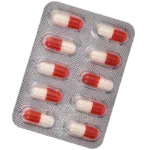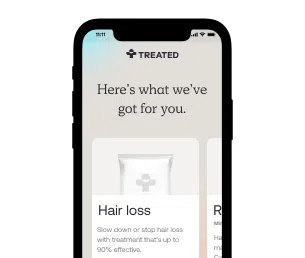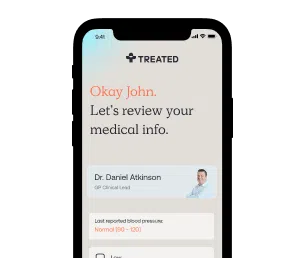BPH
Expert advice and treatments for an enlarged prostate.
Secure delivery
UK clinicians
Enlarged prostate, benign prostate enlargement (BPE) or benign prostatic hyperplasia (BPH) is a condition that goes by many names. It mainly affects middle aged men. It’s where the prostate, a small gland found near a man’s bladder, is bigger than usual.
There can be numerous symptoms, but the main one is urinary problems (like not being able to pass urine easily).
Men with an enlarged prostate find it more difficult to empty their bladder completely, and at times may need to strain to pass urine. Sometimes this is accompanied by discomfort or a ‘reduced flow’, and in some cases blood may appear in the urine.
Men over the age of 50 are most likely to get an enlarged prostate. A lot of men don’t get any symptoms, or only get mild symptoms that don’t bother them.
It’s thought that a change in the balance of hormones as men get older may cause the prostate to grow. There isn’t much evidence to suggest hereditary factors will lead to an enlarged prostate, but some research says you’re more likely to get BPH if your father or brother has it. Some studies also suggest that obese or diabetic men could be more likely to get an enlarged prostate, but it’s not a conclusive link.
BPH is much more common if you’re over 40, and increases the older you get. According to the Urology Care Foundation, it’s thought that about half of men between 51 and 60 will get it, rising to 90% of men over the age of 80.
It’s estimated that a third of men over 50 are thought to get moderate to severe LUTS (which stands for lower urinary tract symptoms) related to the condition.

How we source info.
When we present you with stats, data, opinion or a consensus, we’ll tell you where this came from. And we’ll only present data as clinically reliable if it’s come from a reputable source, such as a state or government-funded health body, a peer-reviewed medical journal, or a recognised analytics or data body. Read more in our editorial policy.
The exact cause of prostate enlargement is unknown, but it’s believed to be linked to hormonal changes as a man gets older. The balance of your hormones in your body changes with age, and this may cause your prostate to grow. There is also some evidence that healthy lifestyle changes like increasing exercise and eating more fruit and vegetables can reduce your risk of developing BPH symptoms.
Research suggests that there may be a connection between testosterone and an enlarged prostate. Testosterone naturally converts in the body to dihydrotestosterone. This is a much more potent hormone than testosterone, and it’s thought that this causes the prostate to grow.
Over time this growth causes pressure to build on the urethra, which makes it harder to pass urine.
If you have BPH, you might notice:
If you have BPH, you may only get some of these symptoms, or you may not get any at all. They can also be caused by other health problems or lifestyle factors, so if you get them, it’s not necessarily an enlarged prostate.
If you do notice any of these symptoms, then always contact a clinician for further advice. If an enlarged prostate is left untreated this can lead to more serious problems.
Having an enlarged prostate isn’t considered particularly serious. But if left untreated, it can cause complications, and most of these are related to not being able to pass urine. Bladder or kidney problems (like infections) are examples, and sometimes surgery may even be required to remove the prostate completely.
Contrary to what some people think, there’s no link between having an enlarged prostate and prostate cancer.

How we source info.
When we present you with stats, data, opinion or a consensus, we’ll tell you where this came from. And we’ll only present data as clinically reliable if it’s come from a reputable source, such as a state or government-funded health body, a peer-reviewed medical journal, or a recognised analytics or data body. Read more in our editorial policy.

How we source info.
When we present you with stats, data, opinion or a consensus, we’ll tell you where this came from. And we’ll only present data as clinically reliable if it’s come from a reputable source, such as a state or government-funded health body, a peer-reviewed medical journal, or a recognised analytics or data body. Read more in our editorial policy.
Have something specific you want to know? Search our info below, or ask our experts a question if you can’t find what you’re looking for.
Genetic polymorphism and pathogenesis of benign prostatic hyperplasia. BJU international, 102(5), 536–544.
Benign Prostatic Hyperplasia (BPH): Symptoms, Diagnosis & Treatment - Urology Care Foundation. [online] www.urologyhealth.org.
The management of lower urinary tract symptoms in men. BMJ (Clinical research ed.), 348, g3861.
Benign Prostatic Hyperplasia and Male Lower Urinary Tract Symptoms: Epidemiology and Risk Factors. Current Bladder Dysfunction Reports, 5(4), pp.212-218.
Testosterone Replacement Therapy and BPH/LUTS. What is the Evidence? Current Urology Reports, [online] 17(6), p.46.
Proscar 5mg film-coated Tablets - Patient Information Leaflet (PIL) - (emc).
Tamsulosin Zentiva 400 microgram prolonged-release hard capsules - Summary of Product Characteristics (SmPC) - (emc).

An effective treatment for enlarged prostate. The generic version of Proscar.

One a day tablet for enlarged prostate and overactive bladder that helps four out of five men.

Treats BPH and an overactive bladder. Once a day capsule for greater control.

Branded treatment for an enlarged prostate. Gets to work on symptoms within a few weeks.

Registered with GMC (No. 4624794)
Meet Daniel
Registered with GPhC (No. 2202465)
Meet Sanjeda
Registered with GPhC (No. 2070724)
Meet Craig
Always read the leaflet that comes with your medication and tell us about any side effects you get.
We know health, but you know you.
Our experts tell you what’s safe, but you decide what’s best.
Answer a few questions and tell us about yourself. Get tailored advice from our clinicians so you can choose better.

Choose your treatment and how often you have it delivered.

We know things change. It’s the nature of life. We’ll check in regularly to make sure your treatment is still right for you.
Pause. Change. Skip. Start again. Any time you like.
Here are some other things we can help with.
Tablets, creams, injections. Get expert advice and choose the ED treatment that’s best for your life.
Cream, tablets, spray. PE treatment is available. Our experts can support you to find the best solution for you.
We're making healthcare more about you. Sign up to our newsletter for personalised health articles that make a difference.
Disclaimer: The information provided on this page is not a substitute for professional medical advice, diagnosis, or treatment. If you have any questions or concerns about your health, please talk to a doctor.
We couldn't find what you're looking for.
Here's everything we treat. Or, if you're looking for something we don't have yet, you can suggest something.
If there’s a particular treatment or condition you’re looking for, tell us and we’ll look into it for you.
Submit your question here, or tell us if you’ve found an issue on our site.
We’ll get back to you very soon. We aim to respond to all queries in one working day.
You’re signed up to our newsletter. Keep an eye on your inbox for our latest update.
By clicking 'Subscribe now' you're agreeing to our Privacy Policy.
We’ve sent you an email asking you to confirm your email address.